National Moth Week 2021 — July 17 to 25.
As mentioned in the previous post, there are about 4,700 documented species of moths in Texas. More are being discovered as Texas Master Naturalists, scientists, moth enthusiasts and residents participate in citizen scientist events and private and group mothing activities organized by local parks and organizations throughout the year and during National Moth Week — www.nationalmothweek.org.
Moths belong to the same order as butterflies: Lepidoptera. There are 150,000 species of moths worldwide — some speculate there are five times that number. There are more than 14,000 species of moths in North America. Moths outnumber butterflies 10 to one, but the science is relatively unstudied although gaining in popularity in many countries.
Moths are important. Like butterflies, most moths drink flower nectar and in doing so, pollinate flowers thereby helping in seed production — not only of native, wild and garden plants, but of food crops as well — and night-blooming flowers missed by day-time pollinators.
Moths play a vital role in the ecosystem. An adult female moth can lay anywhere between 40 and 1,000 eggs in a lifetime, subsequently producing caterpillars that in turn feed other wildlife, such as other insects, spiders, frogs, toads, lizards, bats and birds. Adult moths also are a food source of many wildlife.
Revisit a previous blog on the vital role of moths at: https://rgvctmn.org/blog/anitas-blog-guilt-free-gardening/
Moths have a huge size range; the tiniest can fit on the head of a pin. Locally, silk moths are some of our largest, with wingspans from four to seven inches. Moths have more scales on their wings than butterflies, which makes them appear less sleek although their colors and unique markings can rival those of the most beautiful butterflies.
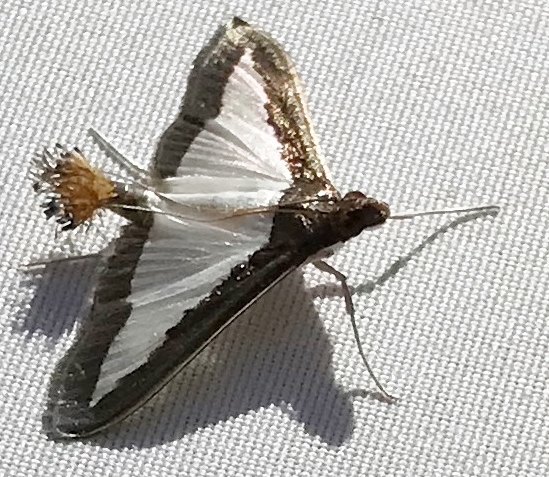
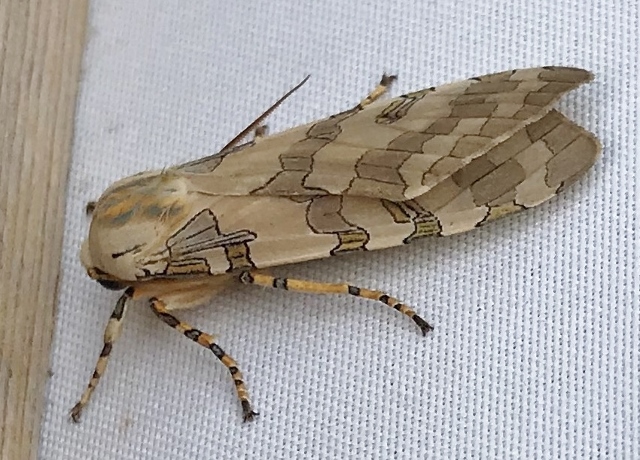
The IO moth is certainly striking as are its colorful progeny. Hackberry trees are one of its larval plants that feed IO moth caterpillars. The moth is safe; the caterpillars produce a toxic irritation if the spines become imbedded in the skin — remember the general rule of thumb: if a caterpillar is fuzzy or hairy, it probably stings. Male IO moths are yellow; females are a purple-ish brown.
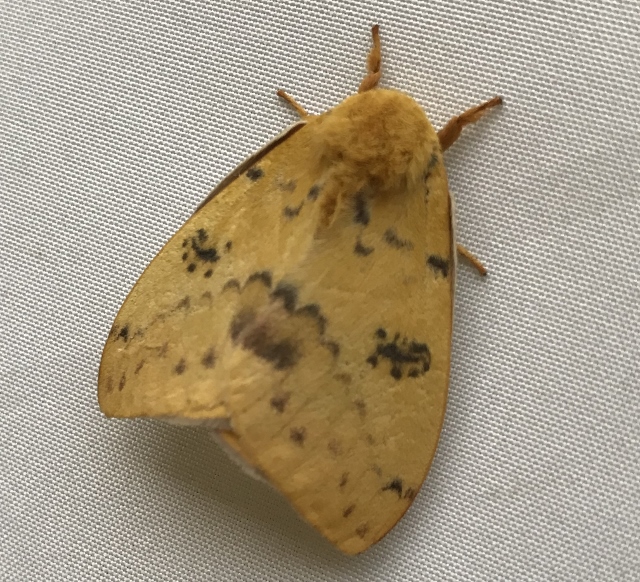
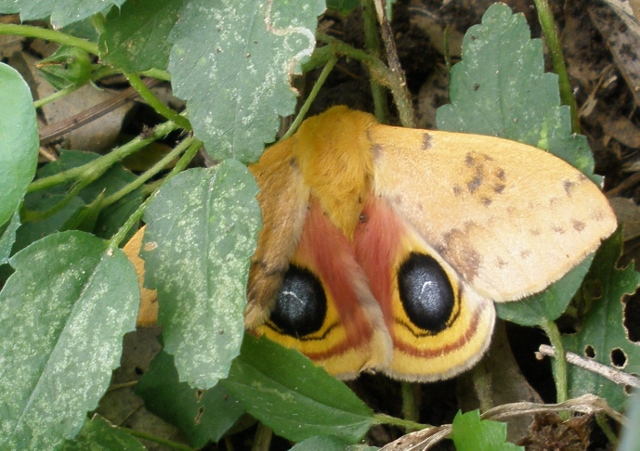
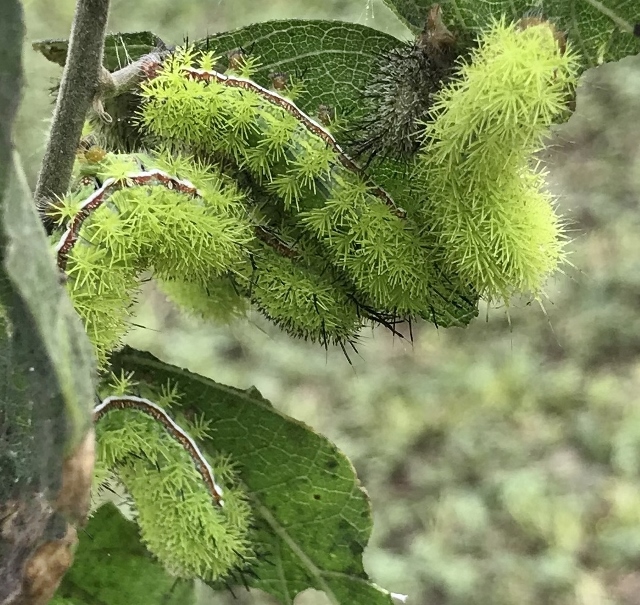
Moth caterpillars are voracious eaters; their resulting droppings, called frass, return important nutrients to the soil.
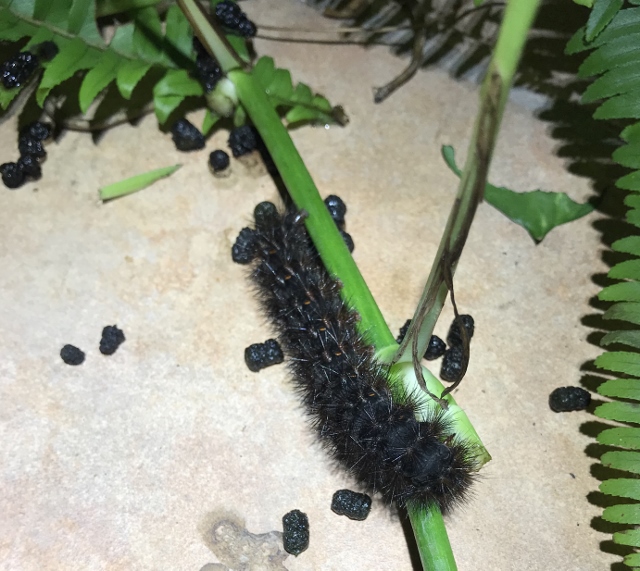
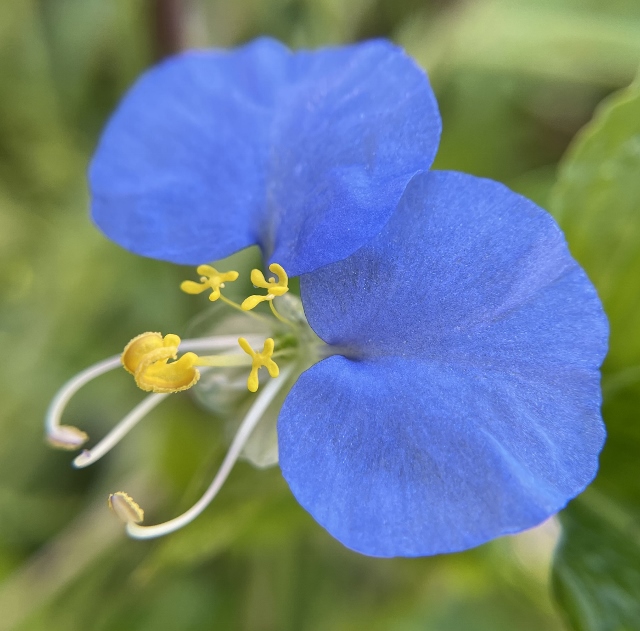
Like butterflies, moths have host plants that feed each species’ caterpillars. Unlike butterflies, many moth species can use a much wider variety of plants as larval hosts. For instance, caterpillars in the tiger moth tribe, specifically the giant leopard moth caterpillars, used 24 different species of plants in my yard last summer, including native passion vines, snapdragon vines, mistflower, lantana, frost weed, fiddlewood and the ubiquitous dayflower. I found them eating leaves of non-native plants, too, like yellow butterfly vine, hibiscus, Hawaiian snow shrub, split leaf philodendron, Dutchman’s pipevine and even the leaves on a grapefruit tree. I’m still collecting names of plants the species uses. Yesterday, I photographed a giant leopard moth caterpillar atop a creamy white mushroom that was half devoured; another was amongst a patch of native straggler daisy, one on a Confederate rose leaf (a hibiscus) and a couple on a zucchini plant in the vegetable garden.
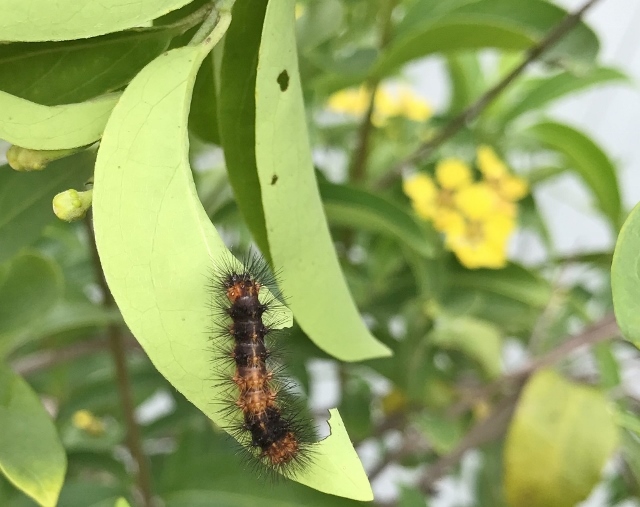
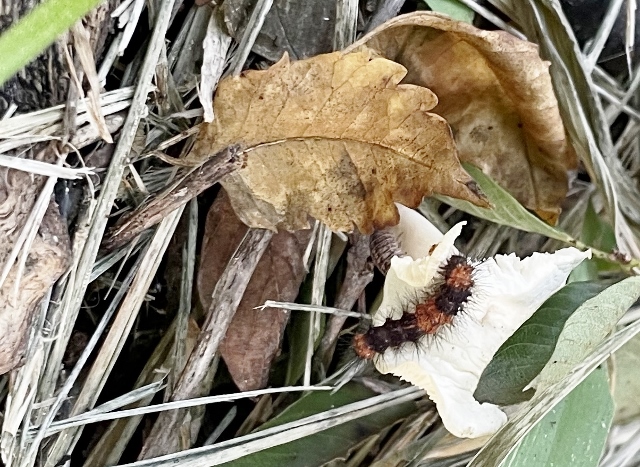
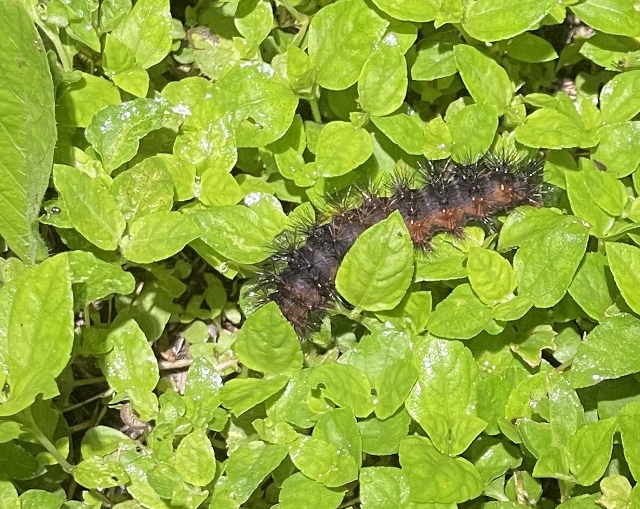
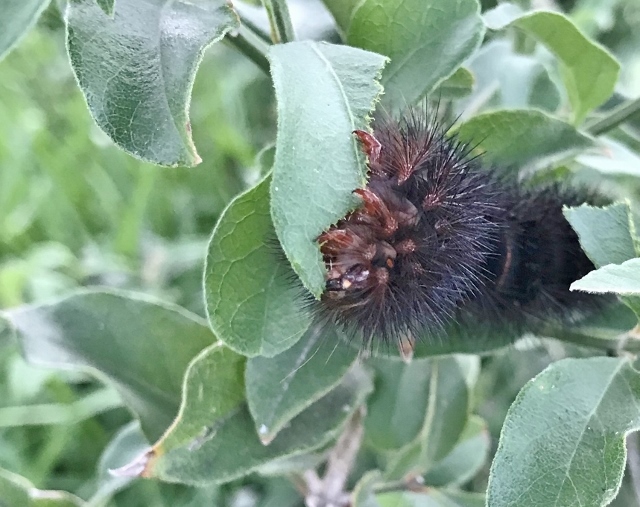
Moths are mostly nocturnal, being active primarily during the night. Some are crepuscular (active during twilight hours) and some, like the hummingbird moth, are diurnal, active during daylight hours. Caterpillars actively feed during the day.
Consider purposely attracting moths by adding a moth garden to your landscape, or supplement an existing butterfly or pollinator garden with the addition of some night blooming plants. More than likely you already have most of what moths require: a mix of plants that include grasses, flowers, shrubs and trees. Just add some night-blooming plants.
Typical flowers favored by moths are generally white or pale so they reflect moonlight; they open in late afternoon or at night and are generally overwhelmingly fragrant only at night and maybe only fragrant to moths.
Native plants like moonflower (also called angel trumpet), Datura wrightii is an excellent choice for a moon garden. It is described in a recent post: https://rgvctmn.org/blog/anitas-blog/anitas-blog-the-exotic-nightshades/.
Other frequently found and locally hearty examples of night blooming plants are nicotiana (Nicotiana repanda), detailed at this link: https://rgvctmn.org/blog/anitas-blog/anitas-blog-unusual-winter-blooms/, heliotrope (Heliotropium angiospermum) and Berlandier’s trumpet (Acleisanthes obtusa).
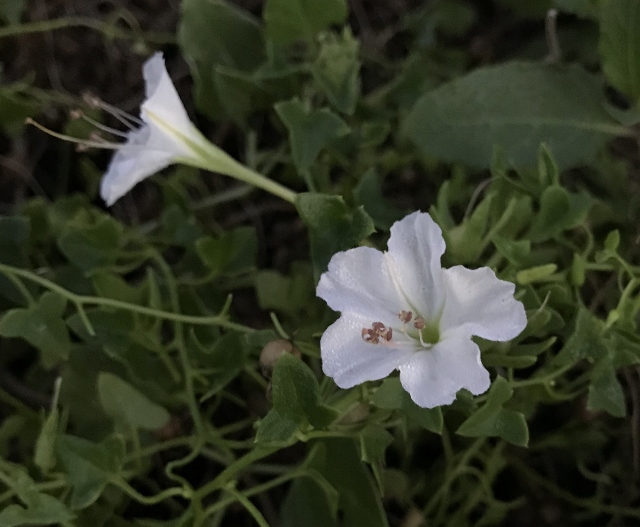
Berlandier’s trumpet, Acleisanthes obtuse, also called angel trumpets and vine four o’clock, is a prolific perennial that can sprawl or climb. It is native to the Edwards Plateau region of Texas and South Texas Plains, which includes the Lower Rio Grande Valley. Like clockwork, the trumpets open at 4 o’clock in the afternoon. By sunup, they are already beginning to close. In the eerie light of misty mornings, the blooms remain open with a vibrancy that appears to glow. The plant is a prolific bloomer, ideal for feeding moths.
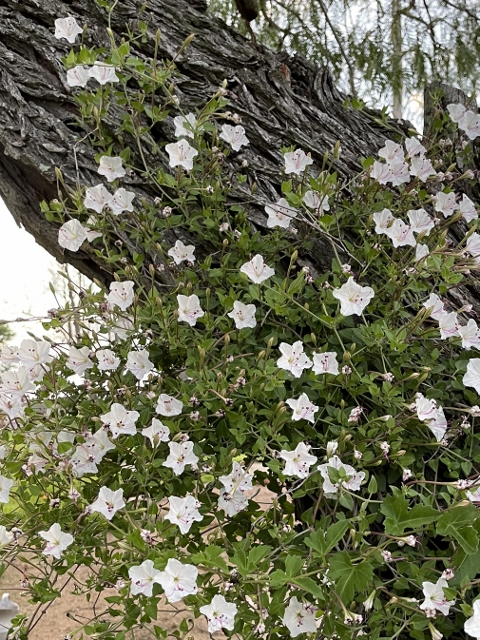
Non-native night blooming species include morning glory, gardenia, white single-variety petunia and night jasmine.
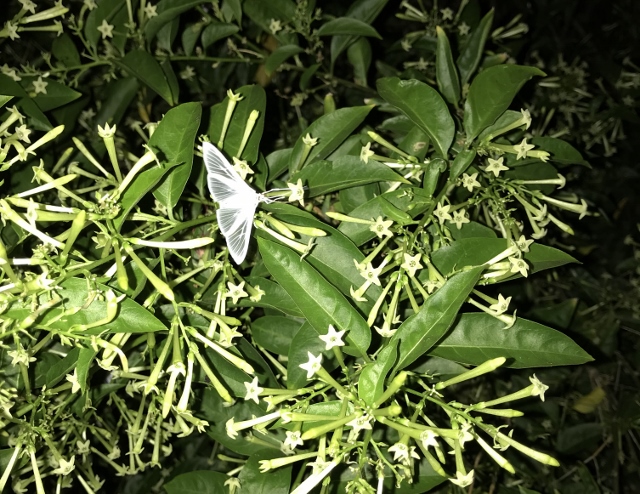
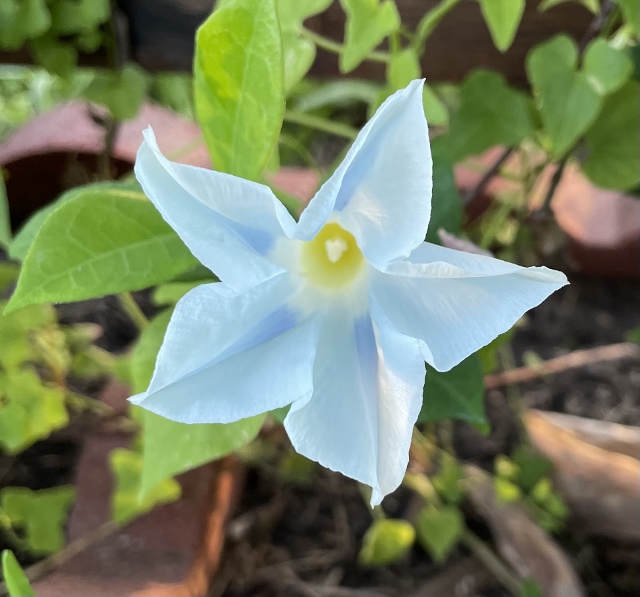
The huge, beautiful, creamy white bloom of the moon vine, also called moonflower or tropical white morning-glory, at a quick glance resembles Datura wrightii — but it’s not; it’s Ipomoea alba, in the morning glory family, Convolvulaceae.
Like Datura wrightii, Ipomoea alba is vespertine-blooming (evening-opening), heavy scented and attracts moths. It is poisonous, causing severe intestinal distress if ingested. Ipomoea alba flowers are nearly six inches in diameter with defined nectar guides in a slight yellowish tinge. Similar to Datura wrightii, the flowers open at dusk and close by noon the following day. A major difference is that Ipomoea alba is a vine. The leaves of I. alba are heart-shaped, the stems mostly a reddish color. The bell of the flower is flat, compared to the deep trumpet shape of Datura wrightii. Ipomoea alba is native from Argentina to northern Mexico, Florida and the West Indies.
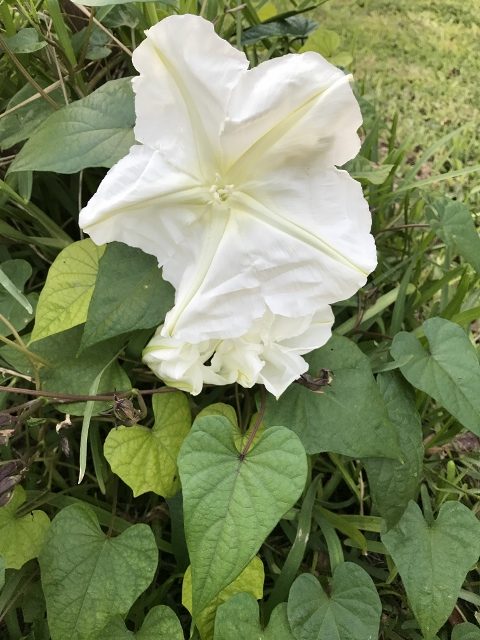
Another tip to help promote moth activity in your garden is to keep plant clippings, fallen leaves and mulch under shrubs and plants to allow hiding spots for moths during the day. And, of course, keep it all pesticide free.
Useful Resources for prospective moth enthusiasts:
As Texas Master Naturalists, we advocate using native plants. When incorporating exotic and non-native species, it’s tremendously important to ensure they are not listed at https://texasinvasives.org/plant_database/. Even native plants can be aggressive; be a conscientious gardener and be prepared to control or eradicate plants if they become a nuisance.
As for caterpillars, it’s important to know what you have so you know whether to pluck them off something important or let other critters in your habitat do the deed. An excellent site for identifying wildlife is www.iNaturalist.org. If you’re not yet familiar with it, check it out and start finding out what’s in your yard.
Today is the start of National Moth Week 2021 — see what’s happening at local parks or set up a moth sheet with ideas at https://nationalmothweek.org/
aggie-horticulture.tamu.edu, gardeningknowhow.com, natureconsesrvancy.ca, National Wildlife Federation (NWF.org), animals.howstuffworks.com and pollinator.org were helpful in writing this article.

Leave a Reply